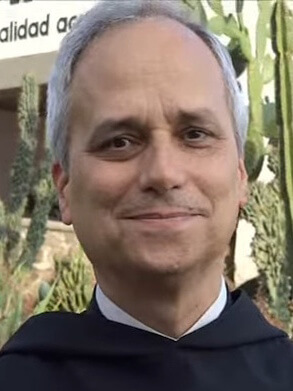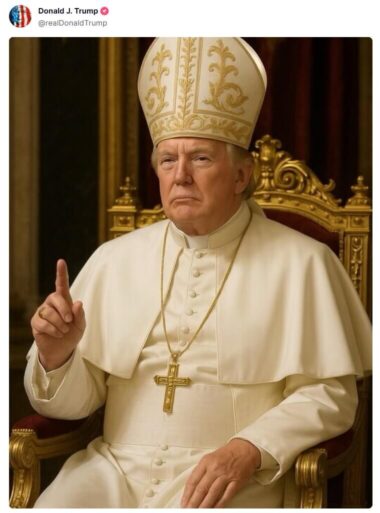VATICAN CITY – A new chapter in the history of the Catholic Church began on May 8, 2025, with the election of Cardinal Robert Francis Prevost as the 267th Pope. The 69-year-old American, who has taken the papal name Leo XIV, is the first pontiff from North America and the first from an English-speaking country since Adrian IV in the 12th century. His election also marks him as the first American and Peruvian (by naturalization) Pope.
Who is Pope Leo XIV?
Born in Chicago, Illinois, on September 14, 1955, Robert Francis Prevost embarked on his religious journey at a young age. He is the son of Louis Marius Prevost, a U.S. Navy veteran of French and Italian descent, and Mildred Martínez, a librarian of Spanish descent. He has two brothers. Prevost’s early life included serving as an altar boy and excelling in his studies, earning a Bachelor of Science in Mathematics from Villanova University in 1977.

He joined the Order of St. Augustine in 1977, took his solemn vows in 1981, and was ordained a priest in Rome on June 19, 1982. His academic pursuits led him to a Master of Divinity from the Catholic Theological Union in Chicago and a Doctor of Canon Law degree from the Pontifical College of St. Thomas Aquinas in Rome. Pope Leo XIV is a polyglot, speaking English, Spanish, Italian, French, and Portuguese, and can read Latin and German.
Cardinal Prevost’s career has been marked by extensive service in the United States and Peru. He served in Peru from 1985 to 1986 and again from 1988 to 1998 in various roles, including parish pastor, diocesan official, and seminary teacher. He returned to the U.S. in 1999 after being elected provincial of the Augustinian Province of Chicago. From 2001 to 2013, he served as Prior General of the Augustinians.
In 2014, Pope Francis appointed him apostolic administrator of the Diocese of Chiclayo in Peru, and he became Bishop of Chiclayo in 2015. He also became a Peruvian citizen in 2015. His rise within the Church continued with his appointment as Prefect of the Dicastery for Bishops and president of the Pontifical Commission for Latin America in 2023, roles that significantly raised his profile. He was created a cardinal by Pope Francis on September 30, 2023.
The Significance of the Name “Leo”
The choice of a papal name is deeply symbolic, often indicating the new Pope’s vision and the direction he intends to lead the Church. By choosing Leo, Pope Leo XIV aligns himself with a lineage of thirteen previous popes who have carried this name, many of whom left a significant mark on Church history. The name “Leo,” derived from the Latin for “lion,” suggests strength and courage. Experts suggest the choice of Leo indicates a commitment to social issues and may signal a continuation of Pope Francis’s ministry. It can also be seen as a nod to the historical strength of the papacy under previous Leos and a commitment to social justice in the modern era.
Historical Popes Named Leo
Pope Leo I (St. Leo the Great, 440-461): Known for his pivotal role in defining Christological doctrine at the Council of Chalcedon (451) and for famously persuading Attila the Hun not to attack Rome. He was a staunch advocate of orthodoxy and significantly contributed to the concept of papal primacy, asserting the Bishop of Rome’s supreme authority. He is one of only three popes to be called “the Great” and was declared a Doctor of the Church.

Pope Leo III (St. Leo III, 795-816): Most famous for crowning Charlemagne as Emperor of the Romans on Christmas Day in 800 AD, a symbolic act that restored the concept of a unified Christian empire in the West and solidified the Church-state relationship. He also worked on church reform and defended Church doctrine.
Pope Leo IX (St. Leo IX, 1049-1054): A significant reforming pope who actively opposed simony (the buying or selling of ecclesiastical privileges) and enforced clerical celibacy. His papacy is also notable for the events leading to the Great Schism of 1054, which formally separated the Catholic and Eastern Orthodox Churches. He was a traveling pope, conducting councils across Europe to implement reforms.
Pope Leo X (Giovanni de’ Medici, 1513-1521): A leading Renaissance pope known for making Rome a cultural center and a patron of the arts, supporting artists like Raphael and Michelangelo. However, his papacy was also marked by lavish spending and the granting of indulgences to fund the construction of St. Peter’s Basilica, which became a key grievance of Martin Luther and contributed to the Protestant Reformation. He excommunicated Martin Luther in 1521.
Pope Leo XIII (1878-1903): Renowned for his foundational work in Catholic social teaching, particularly his 1891 encyclical Rerum Novarum, which addressed workers’ rights and capitalism at the dawn of the industrial age. This earned him the titles “Social Pope” and “Pope of the Workers”. He also promoted Marian devotion, particularly the Rosary, earning the title “Rosary Pope”. His choice of name is seen by many as a key influence for Pope Leo XIV, signaling a commitment to social justice.
The choice of Leo XIV suggests an intention to lead with doctrinal clarity, address contemporary social issues with moral conviction, and perhaps continue the work of Pope Francis in promoting social justice and dialogue. Vatican spokesperson Matteo Bruni noted the name is a “clear reference to the modern social doctrine of the Church” and its relevance in an age of artificial intelligence, linking it to the societal changes faced during Leo XIII’s time with the Industrial Revolution.
Views and Potential Papal Direction
While Pope Leo XIV is seen by some as a centrist, his past statements and actions offer some insight into his potential direction for the Church. He is reported to be closely aligned with Pope Francis’s views on the environment, outreach to the poor, and migrants. In his first public address, Pope Leo XIV emphasized themes of peace, dialogue, and unity, calling for the Church to be one that “builds bridges” and is “always open to receive everyone”.
On Social Issues
Abortion and Euthanasia: Pope Leo XIV has opposed abortion and euthanasia. The Catholic Church historically opposes these.
LGBTQ+ Issues: His stance on LGBTQ+ issues appears more conservative than his predecessor. In 2012, he criticized cultural sympathy for “homosexual lifestyle” and “alternative families comprised of same-sex partners and their adopted children”. As a bishop in Peru, he opposed including “teachings on gender in schools,” stating that “the promotion of gender ideology is confusing, because it seeks to create genders that don’t exist”. While Pope Francis had allowed priests to bless couples not married according to church teaching (including same-sex couples) through the Fiducia supplicans declaration, then-Cardinal Prevost expressed that the declaration might be ineffective in parts of Africa where homosexuality is illegal, stating it “is just not going to work” in such cultural contexts and “it might make a new problem”.
Ordination of Women: Pope Leo XIV does not support the ordination of women to the diaconate, suggesting it “doesn’t necessarily solve a problem” and “it might make a new problem”.
Immigration: He has expressed sympathy for migrants and criticized former U.S. President Donald Trump and Vice President JD Vance’s views on immigration. His X (formerly Twitter) account has reposted statements critical of Trump’s and Vance’s deportation plans. This aligns him with Pope Francis’s support for migrants.
Climate Change: Pope Leo XIV has stated that the Catholic Church should take greater action against climate change and that “dominion over nature” should not be “tyrannical”. He has supported the Vatican’s shift to solar panels and electric vehicles.
The Trump Connection and White House Imagery
The election of an American Pope, particularly one whose views on certain social issues like abortion and homosexuality align with those of U.S. President Donald Trump, has drawn attention. This comes after Trump himself posted an AI-generated image depicting him as the Pope. While Pope Leo XIV has differed with Trump on issues like immigration, their shared conservative stance on other key social matters is noteworthy. The timing of an American cardinal’s election to the papacy shortly after Trump’s controversial post could be interpreted by some as a symbolic, albeit coincidental, convergence.

Separately, the White House’s reported posting of an AI-generated image of Trump depicted as a “Buff Jedi” can be seen as a political messaging tactic. Such imagery aims to portray the President in a powerful, heroic, and culturally resonant light, potentially to bolster his image and appeal to his base by associating him with popular archetypes of strength and rebellion against perceived ‘dark forces.’
A New Pontificate Begins
As Pope Leo XIV begins his pontificate, the Catholic world and beyond will be watching closely to see how he navigates the complex challenges facing the Church and the world. His background as a missionary in Peru, his leadership experience within the Augustinian order and the Vatican, and his choice of a historically significant papal name all suggest a papacy that will strive for doctrinal integrity while engaging with pressing social concerns. His initial calls for peace and bridge-building set a tone for what many hope will be a unifying and impactful leadership.


 ByKus
ByKus Historia
Historia Logos
Logos Humanitas
Humanitas Aesthetica
Aesthetica Cinemania
Cinemania Lingua
Lingua Mythos
Mythos Theologia
Theologia Bibliotecha
Bibliotecha Persona
Persona Quid
Quid News
News Politico
Politico Mundialis
Mundialis Oeconomia
Oeconomia Athletica
Athletica Technologia
Technologia Medicina
Medicina Scientia
Scientia Astronomia
Astronomia













